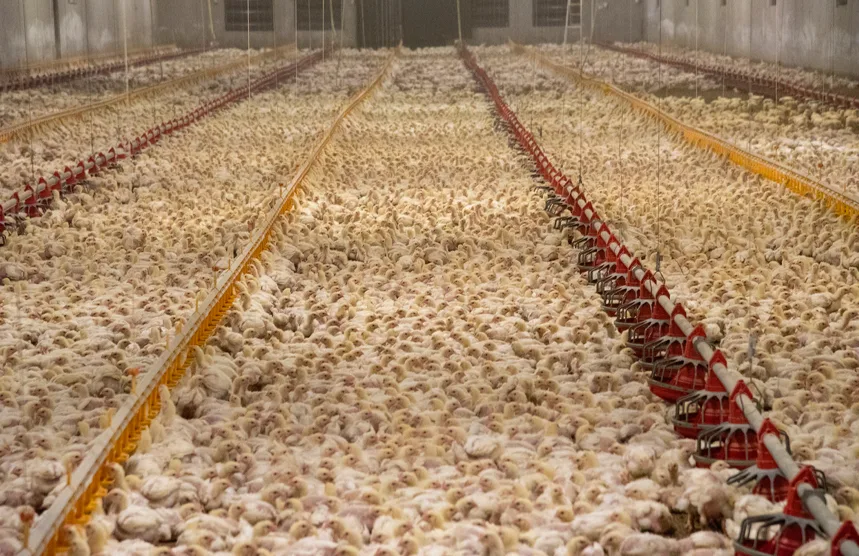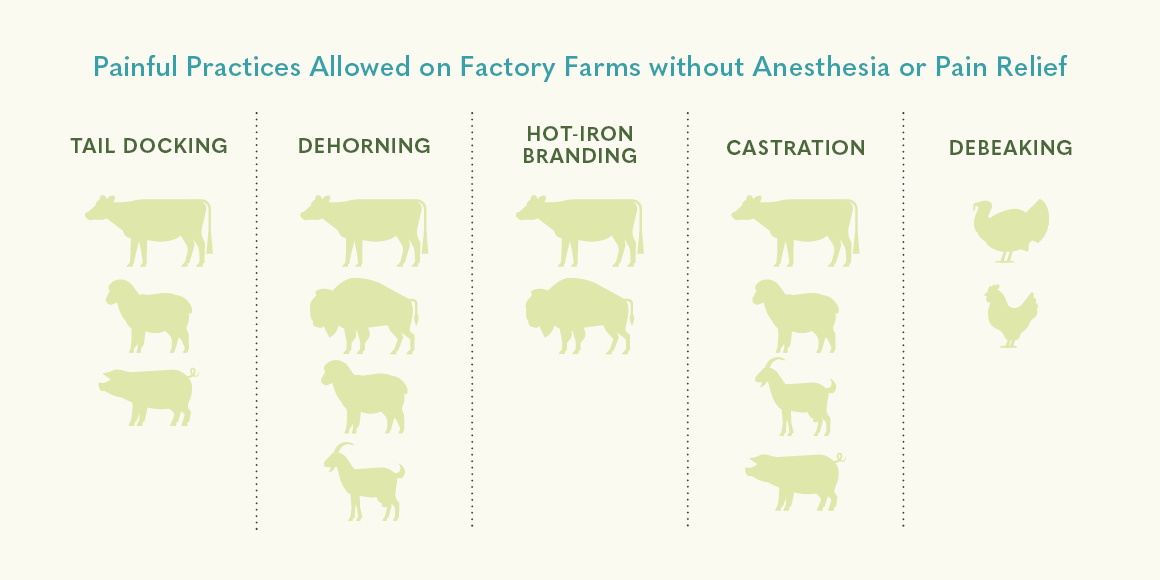Abuse? How so?
Factory farming, also known as concentrated animal feeding operations, are a form of animal agriculture. Nearly all animal products in the United States are produced on factory farms, and while it originated in the US, factory farming is unfortunately becoming increasingly common around the world.
Factory farms are designed to produce large volumes of yield for the lowest possible cost; thus, factory farming uses cost-saving measures like smaller cages, restricted variety of diets, extreme confinement, and worse.
The nature and design of factory farms naturally breeds incredibly inhumane practices that always come at the cost of the emotional and physical wellbeing of the animals.
The Physical Costs of Meat
Factory farms are not afraid to mutilate, confine, amputate, and other horrifying procedures, all for the sake of profit.
Confinement
Four or more egg-laying hens are often packed into a battery cage, a wire enclosure so small that the chickens cannot spread their wings. Out of stress and confinement, the hens peck at each other’s feathers and bodies, damaging their bodies.
Pregnant sows spend each of their pregnancies confined to a metal enclosure that is so small, the sow cannot turn around. Due to this claustrophobic space, sows develop mentally abnormal behaviors, and suffer leg problems, bladder infections, and skin lesions.
In dairy factories, cows spend their entire lives on concrete floors. To boost dairy production, some cows are injected with the growth hormone rBGH or rBST, which increases a cow’s likelihood of developing lameness and mastitis, a painful infection of the udder.

Image from The Humane League via The Humane League website.
https://awionline.org/content/inhumane-practices-factory-farmsMutilation
In order to facilitate confinement of these animals in such stressful, crowded, unsanitary conditions, painful mutilations such as cutting off the horns of cattle, cutting off the beaks of chickens, and docking the tails of sheep, pigs, and indoor cattle are routinely performed. Pain relief is rarely provided.
Cattle and goats, if not naturally hornless, typically undergo procedures to stop horn growth at a young age. Cattle and goats are disbudded or dehorned to reduce the incidence of carcass bruising caused by horn injuries during transport, as well as to reduce the risk of on-farm injuries to other animals and people.
In cattle and sheep, most producers use a rubber band to cut off circulation to the bottom two-thirds or more of the tail, causing the tissue to gradually die over three to seven weeks from lack of blood supply. Eventually, the necrotic tail tip falls off or is cut off. Other methods include cauterizing with hot irons or surgical amputation. In piglets, blunt trauma, scissors, sharp instruments, or hot cautery are most often used to remove most of the tail.
Beak trimming, also known as de-beaking or partial beak amputation, is performed nearly universally on chickens. The procedure involves using a hot blade to cut off part of the beak or using high intensity infrared light to damage beak tissue, causing it to die and slough off. Typically, one-third to two-thirds of the beak is removed. Several factors can affect the severity and duration of acute and chronic pain associated with beak trimming, but generally, the hot blade method is considered more painful than the infrared method.

Image from Animal Welfare Institute via AWIOnline Website.
https://awionline.org/content/inhumane-practices-factory-farms